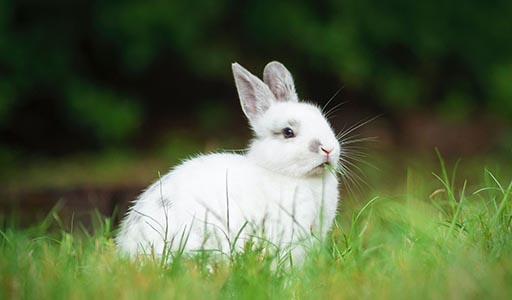Rabbits

Rabbit Information
Rabbits are greyish-brown mammals with long ears and short bushy tails. Eastern cottontail rabbits inhabit most of the central and eastern United States. Rabbits inhabit vegetative areas that offer plenty of grass and plants for them to feed on. Rabbits are most active during the early morning and around sunset. Female rabbits can even produce up to 6 litters per year. Rabbits are also known to carry various diseases that can be harmful if they are transferred to humans or animals.

What does a Rabbit look like?
Rabbits are generally noted for their prominent ears and relatively large hind feet that allow them to move quickly in a hopping manner. At 3 to 7 pounds in weight, with an average body length that ranges from 17 to 21 inches, jackrabbits are larger than their cottontail relatives. Cottontails typically only weigh between 1 and 4 pounds and measure about 16 or 17 inches in body length. Their fur is brown or brownish-gray on the top of the body and white on the underside. The underside of the tail is also white and resembles a ball of cotton, hence the common name of the species.

What does a Rabbit eat?
Particularly attracted to the tender shoots of growing plants, rabbits will eat virtually any form of vegetation they can find, including flowers, grass, shrubs, and garden crops. Their favorite foods range from garden staples like carrots, lettuce, and peas, to herbs and other plant life such as clover, parsley, and tulip stems. Rabbits adjust their diet according to the season. They eat flowers and vegetable plants in the spring and summer before switching to tree bark during the fall and winter.

Rabbit habitats
In general, rabbits live in areas where enough vegetation exists to provide both food and cover. The pests are therefore commonly found in fields and meadows, orchards, farms, parks, and landscaped backyards. In the United States, the range of the Eastern cottontail rabbit extends from the East Coast to the Great Plains and often includes the suburbs, while jackrabbits tend to occupy more open areas in the western regions of the country.
Frequently Asked Questions
Rabbits and hares are in the same family, but the two pests are actually different species. While people sometimes use the terms interchangeably, hares are larger with longer ears and are not as social as rabbits.
The difference between rabbits and hares is also clear from where they live and their young. Hares tend to live above ground whereas rabbits usually build their warrens under the soil.
Newborn rabbits are born small and hairless with closed eyes. In contrast, a hare is fully developed from the start with open eyes and a full coat of fur.
There are a few other differences between a rabbit and a hare. For example:
- Hares tend to stay in wooded areas. Rabbits like to stick to dense vegetation.
- Rabbits dive for cover and hide from predators, but hares rely on speed to outrun their enemies.
- Hares change their fur color to match the seasons, while a rabbit’s coat stays the same year-round.
Usually found around feeding sites, rabbit feces has a very distinct form. There are several traits to look for:
- Round shape
- Light to dark brown color
- Pea-sized or slightly larger
- Dry and crumbly


